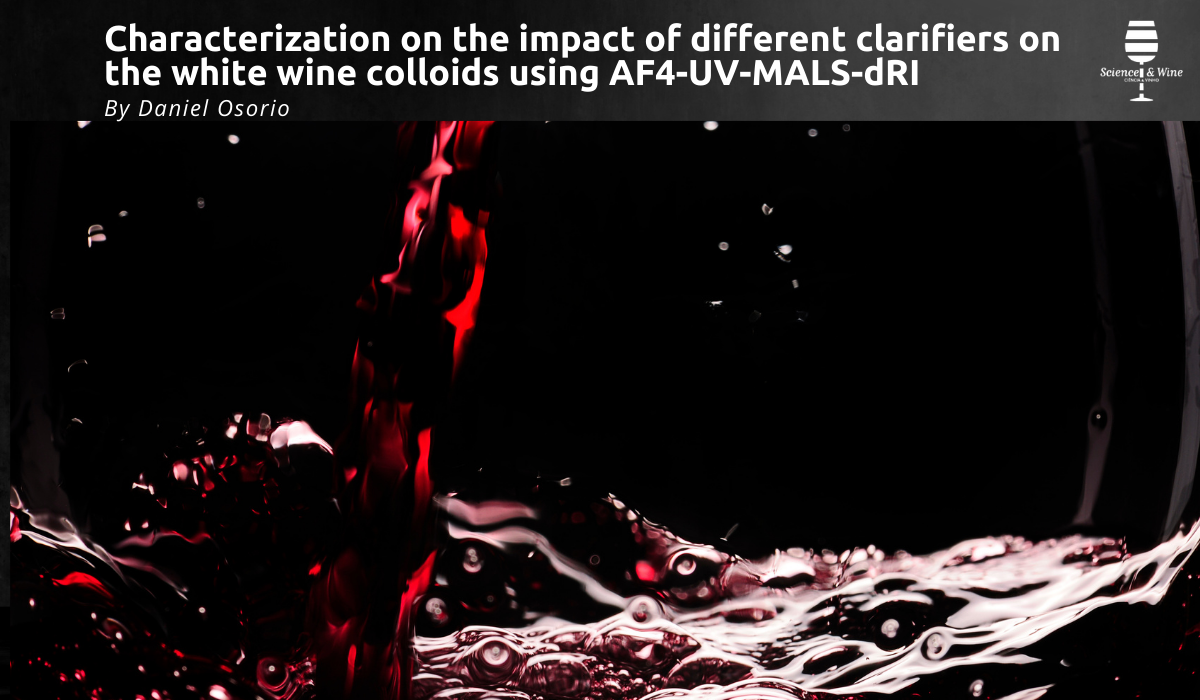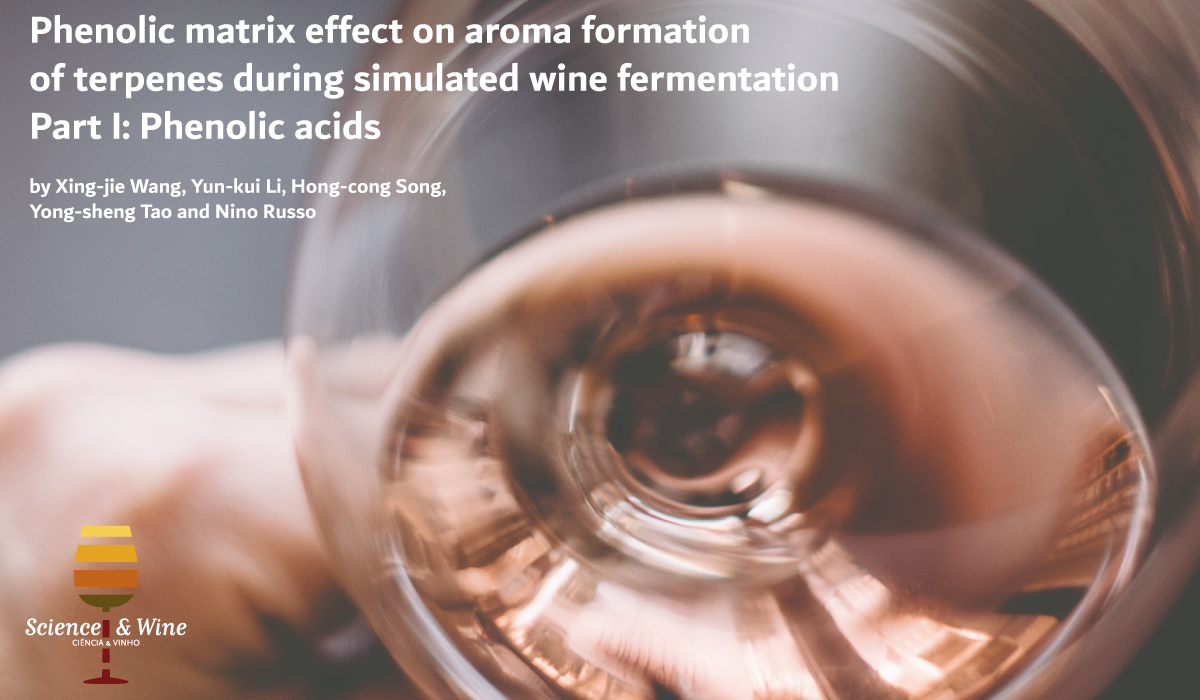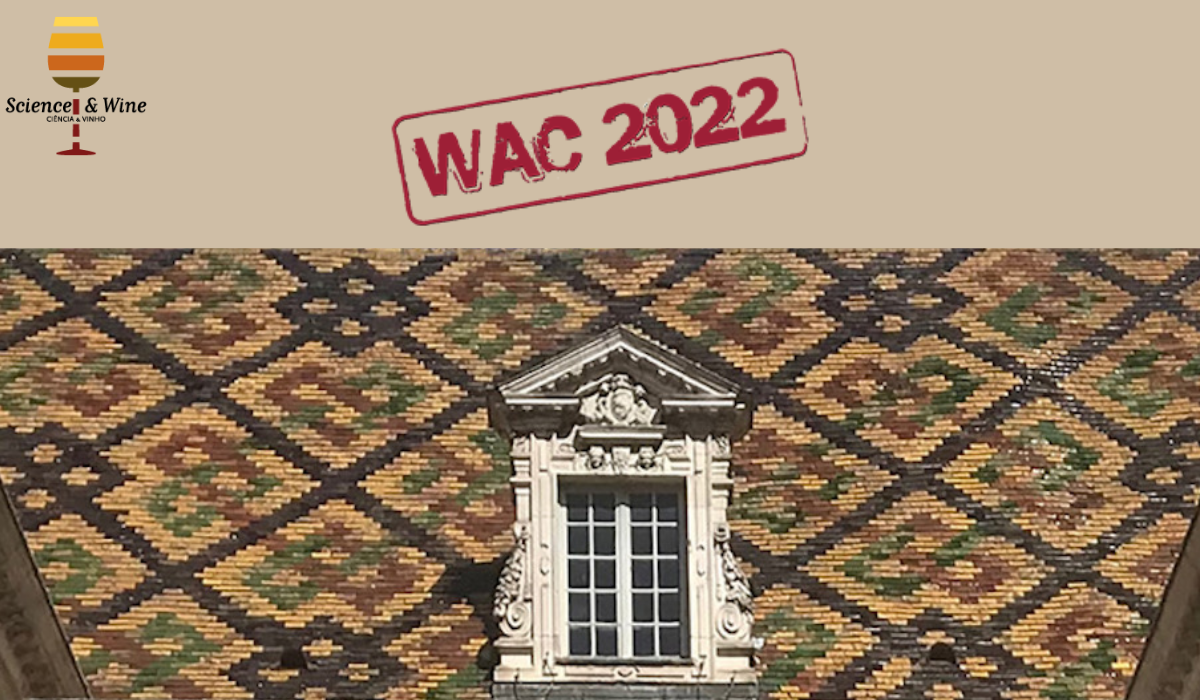After two successive postponements, the fifth edition of Wine Active Compounds (WAC) 2021 happened in the Palace of the Dukes of Burgundy in Dijon, France, from Wednesday June 29 to Friday July 1, 2022, under the auspices of the UNESCO Chair “Culture & Traditions of Wines” and the Institut Jules Guyot at University of Burgund.

Sustainable green processing of grape pomace using micellar extraction for the production of value-added hygiene cosmetics
This study sought to evaluate the possibility of using grape pomace, a waste material from wine production, for the preparation of cosmetic components. Following the existing clear research trend related to improving the safety of cleansing cosmetics, an attempt was made to determine the possibility of preparing model shower gels based on grape pomace extract. The results obtained showed that the extracts based on waste grape pomace contained a number of valuable cosmetic compounds (e.g., organic acids, phenolic compounds, amino acids and sugars), and the model products basis on them provided colorful and safe natural cosmetics.

Characterization on the impact of different clarifiers on the white wine colloids using AF4-UV-MALS-dRI
Clarifiers are substances used during the winemaking process to enhance clarity and stability in the wines. The different clarifiers may alter removal capacities differently. In this study, the removal efficiency of seven common fining agents, divided into three groups (mineral clarifiers, synthetic polymeric clarifiers, and vegetable protein clarifiers), was analyzed with Asymmetrical Flow Field-Flow fractionation

Practical alternative for iron removal in organic white wines
This post presents an effective and practical alternative for iron removal in aqueous solutions and organic white wines based on continuous filtration via mechanically prepared filters composed of vegetable fibres from Scirpus californicus (Totora) and Gunnera tinctoria (Nalca) and fibrillated cellulose (CF) extracted from Eucalyptus globulus (Eucalipto). The study results indicate the potential of these natural fibres in the demetallization of organic wines.

Origin of wine lignans
Plant lignans possess several properties beneficial for human health and therefore, increasing their contents in foods and beverages is desirable. One of the lignan sources in human diet is wine. To elucidate the origin of lignans contained in wine, LC-MS was used to analyze resinol-related lignans in must, seeds, stems, and wine prepared using stainless steel tanks, oak barrels, and Qvevri (clay vessel). White wines aged in stainless steel tanks contained significantly lower amounts of lignan aglycones (20-60 µg/L) than red and Qvevri wines (300-500 µg/L). Generally, white wines aged in stainless steel tanks contained only low amounts of isolariciresinol and matairesinol. Qvevri wines and red wine aged in stainless steel tank contained up to five lignan compounds and in wine aged in oak barrel, six different lignans were identified. Consistently, only low concentration of isolariciresinol has been found in must, whereas more lignan compounds have been found in grape seeds (isolariciresinol, secoisolariciresinol, and pinoresinol) and stems (isolariciresinol and syringaresinol). Consequently, we conclude that lignan content in wine can be increased by maturation in contact with grape berries, seeds, or stems or with wood.

Astringency sub-qualities of red wines and the influence of wine-saliva aggregates
Astringency is a sensory attribute, related to the quality and mouthfeel of red wines. However, the origin of astringency sub-qualities, such as the typical drying astringency found in immature grapes, is still unknown. Astringency of red wines with similar tannin content but different astringency sub-qualities, from different harvest dates, is studied. Astringency was characterised in terms of friction coefficient, polyphenol content, sensory analysis and tannin/salivary–proteins aggregates characterisation. A different evolution during ripening was found for both Cabernet Sauvignon and Carménère, and tannin–protein aggregates showed differences in size, shape and surface. The velvety sub-quality appears to be related to aggregates with low precipitation, and with specific surface characteristics as roundness and Feret diameter. Results from this work propose an effect of aggregates on sensory perception and opens the possibility to explore their effect on oral lubrication.

How much do we currently know about the relationship between grape and wine phenolics and cell wall material?
The present post summarizes a review that relates the last decade’s findings on the relationship between phenolics and polysaccharides from grapes, throughout the entire winemaking process up to evaluating the impact of their relationship on the red wine sensory perception. The combination and interconnection of the most recent research studies, from single interactions in model wines to the investigation of the formation of complex macromolecules, brings the perfect story line to relate the relationship between phenolics and polysaccharides from the vineyard to the glass. Grape pectin is highly reactive toward grape and grape derived phenolics. Differences between grape cultivars or changes during grape ripeness will affect the extractability of these compounds into the wines. Therefore, the nature of the grape components will be crucial to understand the subsequent reactions occurring between phenolics and polysaccharide of the corresponding wines. It has been demonstrated that they can form very complex macromolecules which affect wine color, stability and sensory properties.

Characterization of wines by vineyard, region, and vintage by combining untargeted 1H NMR and targeted differential sensing
NMR spectroscopy was used to evaluate the chemical fingerprint of the wines, whereas the peptide-based sensing array is known to mimic the senses of taste, smell, and palate texture by characterizing the phenolic profile. Multivariate and univariate statistical analyses of the combined NMR and differential sensing array dataset classified the genetically identical Pinot noir wines on the basis of distinctive metabolic signatures associated with the region of growth, vineyard, and vintage year.

Phenolic matrix effect on aroma formation of terpenes during simulated wine fermentation – Part I: Phenolic acids
This post reports the results of study where fermentations were performed using simulated grape juice supplemented with terpene glycosides (TGs), extracted from Vitis vinifera L. Meili, and phenolic acids (gallic acid or p-coumaric acid). Free terpenes were detected using solid phase microextraction-gas chromatography-mass spectrometry (SPME-GC–MS) every day during the fermentation, and the aromas of final wines were evaluated by panelists. Results showed that phenolic acids remarkably inhibited TG hydrolysis and free terpene volatilization, and affected wine aroma perception. These findings indicate that the matrix effect of phenolic acids can effectively control the release and modulate the global feature of wine aromas. See all at: http://science-and-wine.com/


